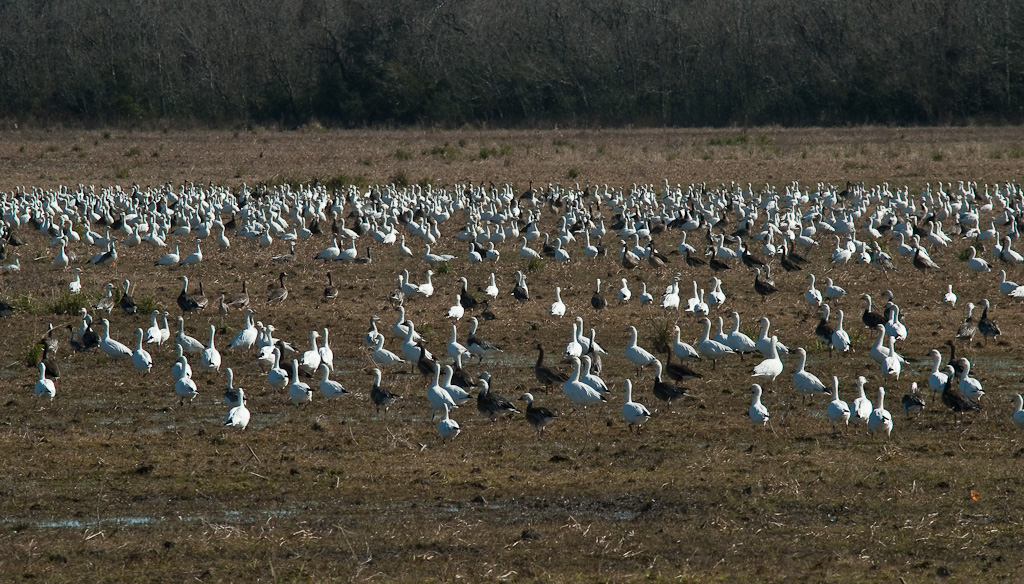View Programs and Tools that could be used for Wildlife Management
Managing Wildlife on your Land
Texas is gifted with great natural abundance. The wide array of geology, topography, climate, and soils create a complex matrix of habitat types. This landscape diversity supports a wide variety of plants and animals by providing food, shelter and breeding grounds. Agriculture, transportation, and urbanization have changed the look of natural landscapes and divided them into smaller and smaller fragmented patches. As Texas grows, it is critical that large tracts of land remain wild and receive quality management.
Landowners with large parcels have a unique opportunity to assist in the preservation of species and habitat diversity that has made Texas such an abundant land for wildlife, recreation, and beauty. Proper wildlife management goes hand in hand with developing nature tourism practices on your property. Whether considering a hunting lease, promoting wildlife photography, or just creating a nature haven for visitors, an abundance of wildlife will certainly add value to your nature tourism operation.
Learn about Wildlife Management from the Experts
Texas A&M AgriLife Extension Service
Texas Parks and Wildlife Department
Programs and Tools that could be used for Wildlife Management
Today, there are many organizations that provide technical and financial assistance to land owners who wish to begin voluntary wild management practices on their land.
Click on a program below to learn more
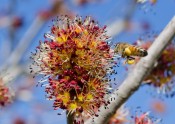 Agricultural Conservation Easement Program’s Wetland Reserve Easements - CEP WRE, created in the 2014 Farm Bill is the newest version of the previously authorized Wetlands Reserve Program. Under ACEP WRE, the Natural Resources Conservation Service (NRCS) provides financial and technical support to private landowners and Indian tribes to protect, enhance, or restore wetlands. A wetland reserve easement is used to accomplish this protection. Read More →
Agricultural Conservation Easement Program’s Wetland Reserve Easements - CEP WRE, created in the 2014 Farm Bill is the newest version of the previously authorized Wetlands Reserve Program. Under ACEP WRE, the Natural Resources Conservation Service (NRCS) provides financial and technical support to private landowners and Indian tribes to protect, enhance, or restore wetlands. A wetland reserve easement is used to accomplish this protection. Read More → AgriLife Extension Program - Texas A&M AgriLife Extension Service The AgriLife Extension Program, a part of Texas A&M AgriLife Extension Service, is an education agency with a statewide network of professional educators and volunteers. AgriLife presents research-based education programs on a wide variety of topics from 4-H Youth Development to Disaster Management. Courses of interest to wetland owners may include restoration and conservation of wildlife habitat, wildlife and fisheries management, water use efficiency, watershed health and protection, and wetland restoration. The AgriLife Extension Program website offers online courses and job training, access... Read More →
AgriLife Extension Program - Texas A&M AgriLife Extension Service The AgriLife Extension Program, a part of Texas A&M AgriLife Extension Service, is an education agency with a statewide network of professional educators and volunteers. AgriLife presents research-based education programs on a wide variety of topics from 4-H Youth Development to Disaster Management. Courses of interest to wetland owners may include restoration and conservation of wildlife habitat, wildlife and fisheries management, water use efficiency, watershed health and protection, and wetland restoration. The AgriLife Extension Program website offers online courses and job training, access... Read More →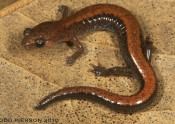 Candidate Conservation Agreement with Assurances (CCAA) - US Fish and Wildlife Service (USFWS) Candidate Conservation Agreements with Assurances are a tool for non-Federal private landowners who voluntarily take measures to stabilize and restore populations of rare or candidate species before they are listed under the Endangered Species Act. Landowners participate in identifying threats to these species, by taking part in conservation activities specific to the species, and by improving and maintaining critical habitat. This formal agreement between the landowner and US Fish and Wildlife Service guarantees that if the CCAA if fulfilled, the landowner will... Read More →
Candidate Conservation Agreement with Assurances (CCAA) - US Fish and Wildlife Service (USFWS) Candidate Conservation Agreements with Assurances are a tool for non-Federal private landowners who voluntarily take measures to stabilize and restore populations of rare or candidate species before they are listed under the Endangered Species Act. Landowners participate in identifying threats to these species, by taking part in conservation activities specific to the species, and by improving and maintaining critical habitat. This formal agreement between the landowner and US Fish and Wildlife Service guarantees that if the CCAA if fulfilled, the landowner will... Read More →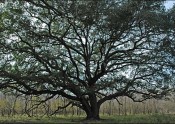 Carbon Storage and Credits: Landowner/Developer and Aggregators - Various Private and Nonprofit Entities Choosing a Marketplace for Carbon Trade No one single program deals with carbon offset credits. One branch of the carbon market is the compliance market where carbon emitters are required to offset their emissions by local, state, federal, or international policy. The other branch of the carbon market is the voluntary market where individuals and businesses volunteer to purchase carbon offsets in order to reduce their greenhouse gas emission impacts. There are several marketplaces (often called exchanges) for buyers and sellers of carbon... Read More →
Carbon Storage and Credits: Landowner/Developer and Aggregators - Various Private and Nonprofit Entities Choosing a Marketplace for Carbon Trade No one single program deals with carbon offset credits. One branch of the carbon market is the compliance market where carbon emitters are required to offset their emissions by local, state, federal, or international policy. The other branch of the carbon market is the voluntary market where individuals and businesses volunteer to purchase carbon offsets in order to reduce their greenhouse gas emission impacts. There are several marketplaces (often called exchanges) for buyers and sellers of carbon... Read More →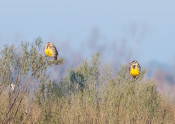 Celebrate Urban Birds Mini-Grant Program - Cornell University Lab of Ornithology Celebrate Urban Birds (CUB) reaches out to underserved urban and rural communities to promote interest in birds, science, the arts, neighborhood greening, and habitat creation. Developed by the Cornell Lab of Ornithology, CUB has worked with over 9,000 community organizations around the country since 2007. CUB administers a mini-grant program to help fund CUB project and event costs. The average award for a mini-grant is between $100 and $750 dollars. Each CUB project will incorporate community involvement, the arts, greening, birds, and citizen... Read More →
Celebrate Urban Birds Mini-Grant Program - Cornell University Lab of Ornithology Celebrate Urban Birds (CUB) reaches out to underserved urban and rural communities to promote interest in birds, science, the arts, neighborhood greening, and habitat creation. Developed by the Cornell Lab of Ornithology, CUB has worked with over 9,000 community organizations around the country since 2007. CUB administers a mini-grant program to help fund CUB project and event costs. The average award for a mini-grant is between $100 and $750 dollars. Each CUB project will incorporate community involvement, the arts, greening, birds, and citizen... Read More →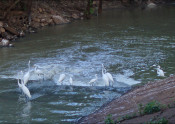 Clean Water State Revolving Fund Loan Program: Texas Loan Program - Texas Water Development Board (TWDB) The Clean Water State Revolving Fund (CWSRF), which is authorized by the Clean Water Act and funded by the US Environmental Protection Agency (EPA), provides below-market interest rate loans to applicants wishing to implement projects for estuary management, nonpoint source pollution management, or wastewater management. Applicants can be cities, counties, districts, river authorities, and private owners. Funding can be used for planning, design, and construction of projects. CWSRF can be used for wetland projects. According to the EPA, wetland projects are usually categorized... Read More →
Clean Water State Revolving Fund Loan Program: Texas Loan Program - Texas Water Development Board (TWDB) The Clean Water State Revolving Fund (CWSRF), which is authorized by the Clean Water Act and funded by the US Environmental Protection Agency (EPA), provides below-market interest rate loans to applicants wishing to implement projects for estuary management, nonpoint source pollution management, or wastewater management. Applicants can be cities, counties, districts, river authorities, and private owners. Funding can be used for planning, design, and construction of projects. CWSRF can be used for wetland projects. According to the EPA, wetland projects are usually categorized... Read More →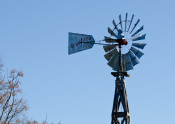 Conservation Expense Federal Tax Deduction - IRS Deductions for Conservation Expenses In general, farm landowners and tenants can deduct expenses related to soil or water conservation, farmland erosion prevention, or endangered species recovery from their federal taxes, where otherwise these would be considered capital expenses. The deduction for conservation expenses is capped at 25% of the gross income from farming. Conservation expenses can only be deducted by those in the business of farming for profit. See the IRS “Farmer’s Tax Guide” for details. Conservation practices must be consistent with an approved Natural Resources Conservation... Read More →
Conservation Expense Federal Tax Deduction - IRS Deductions for Conservation Expenses In general, farm landowners and tenants can deduct expenses related to soil or water conservation, farmland erosion prevention, or endangered species recovery from their federal taxes, where otherwise these would be considered capital expenses. The deduction for conservation expenses is capped at 25% of the gross income from farming. Conservation expenses can only be deducted by those in the business of farming for profit. See the IRS “Farmer’s Tax Guide” for details. Conservation practices must be consistent with an approved Natural Resources Conservation... Read More →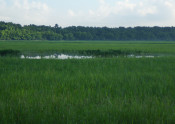 Conservation Reserve Program Continuous Signup - USDA Farm Service Agency (FSA) The Continuous Conservation Reserve Program (CCRP) is an agricultural land conservation program administrated by the Farm Service Agency (FSA) and is an offshoot of the Conservation Reserve Program (CRP). Like CRP, it is a voluntary program available to farmers and other agricultural and silvicultural operations with the mission to restore and protect environmentally sensitive lands with special emphasis on wetlands, wildlife habitat, and water quality buffers. As with the CRP program, farmers remove sensitive areas from agricultural production for 10 to 15 years.... Read More →
Conservation Reserve Program Continuous Signup - USDA Farm Service Agency (FSA) The Continuous Conservation Reserve Program (CCRP) is an agricultural land conservation program administrated by the Farm Service Agency (FSA) and is an offshoot of the Conservation Reserve Program (CRP). Like CRP, it is a voluntary program available to farmers and other agricultural and silvicultural operations with the mission to restore and protect environmentally sensitive lands with special emphasis on wetlands, wildlife habitat, and water quality buffers. As with the CRP program, farmers remove sensitive areas from agricultural production for 10 to 15 years.... Read More →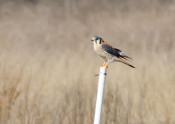 Conservation Reserve Program General Signup - USDA Farm Service Agency (FSA) The Conservation Reserve Program (CRP) is an agricultural land conservation program administrated by the Farm Service Agency (FSA). Twenty years after its inception in 1985, CRP had reduced 450 million tons of soil erosion per year, restored 2 million acres of wetlands and adjacent buffers, reduced 48 million metric tons of carbon dioxide from the air, and protected 170,000 miles of stream. According to the Texas Parks and Wildlife Department, Texas currently has 3 million acres enrolled in CRP. CRP offers an annual... Read More →
Conservation Reserve Program General Signup - USDA Farm Service Agency (FSA) The Conservation Reserve Program (CRP) is an agricultural land conservation program administrated by the Farm Service Agency (FSA). Twenty years after its inception in 1985, CRP had reduced 450 million tons of soil erosion per year, restored 2 million acres of wetlands and adjacent buffers, reduced 48 million metric tons of carbon dioxide from the air, and protected 170,000 miles of stream. According to the Texas Parks and Wildlife Department, Texas currently has 3 million acres enrolled in CRP. CRP offers an annual... Read More →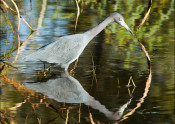 Conservation Stewardship Program (CStP) - USDA Natural Resources Conservation Service (NRCS) The Conservation Stewardship Program (CStP) is a voluntary conservation program administered by US Department of Agriculture (USDA) Natural Resources Conservation Service (NRCS). The program’s mission is to assist agricultural producers in maintaining and enhancing their existing conservation efforts, especially in relation to Texas’ program priorities: water quantity, soil erosion, and plant health and condition. The theme for CStP is “payment for performance“. Eligible lands include privately owned and Tribal agricultural lands, croplands, pasturelands, rangelands, grasslands, and nonindustrial private forest land. This includes... Read More →
Conservation Stewardship Program (CStP) - USDA Natural Resources Conservation Service (NRCS) The Conservation Stewardship Program (CStP) is a voluntary conservation program administered by US Department of Agriculture (USDA) Natural Resources Conservation Service (NRCS). The program’s mission is to assist agricultural producers in maintaining and enhancing their existing conservation efforts, especially in relation to Texas’ program priorities: water quantity, soil erosion, and plant health and condition. The theme for CStP is “payment for performance“. Eligible lands include privately owned and Tribal agricultural lands, croplands, pasturelands, rangelands, grasslands, and nonindustrial private forest land. This includes... Read More →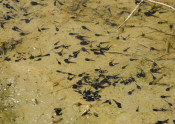 Conservation Technical Assistance Program (CTA) - USDA Natural Resources Conservation Service (NRCS) The Conservation Technical Assistance (CTA) program is a voluntary program administered by the National Resources Conservation Service (NRCS) to provide land users with the technical assistance needed to maintain and restore healthy productive landscapes. CTA assistance can help address a broad range of conservation topics including enhancement of fish and wildlife habitat, soil loss from erosion, agricultural waste and nutrient management, and long term sustainability of production lands. Land users such as agricultural and silvicultural producers, local governments, citizen groups, Tribal governments,... Read More →
Conservation Technical Assistance Program (CTA) - USDA Natural Resources Conservation Service (NRCS) The Conservation Technical Assistance (CTA) program is a voluntary program administered by the National Resources Conservation Service (NRCS) to provide land users with the technical assistance needed to maintain and restore healthy productive landscapes. CTA assistance can help address a broad range of conservation topics including enhancement of fish and wildlife habitat, soil loss from erosion, agricultural waste and nutrient management, and long term sustainability of production lands. Land users such as agricultural and silvicultural producers, local governments, citizen groups, Tribal governments,... Read More →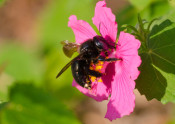 Debt for Nature Program - USDA Farm Service Agency (FSA) The Debt for Nature (DFN) program is administered by the USDA Farm Service Agency (FSA). DFN is only available to persons with FSA loans secured by real estate. DFN allows eligible landowners to reduce their FSA debt while practicing wildlife stewardship on their farms. Eligible landowners can have a portion of their debt cancelled in exchange for protecting natural resources on marginal cropland and environmentally sensitive lands. Participants in the DFN program enter into a conservation contract of 10, 30, or 50 years... Read More →
Debt for Nature Program - USDA Farm Service Agency (FSA) The Debt for Nature (DFN) program is administered by the USDA Farm Service Agency (FSA). DFN is only available to persons with FSA loans secured by real estate. DFN allows eligible landowners to reduce their FSA debt while practicing wildlife stewardship on their farms. Eligible landowners can have a portion of their debt cancelled in exchange for protecting natural resources on marginal cropland and environmentally sensitive lands. Participants in the DFN program enter into a conservation contract of 10, 30, or 50 years... Read More →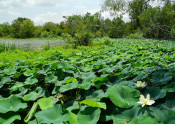 Environmental Quality Incentives Program (EQIP) - USDA Natural Resources Conservation Service (NRCS) EQIP About EQIP The Environmental Quality Incentives Program (EQIP) is a voluntary conservation program administered by the Natural Resources Conservation Service (NRCS). The program’s mission is to promote the compatibility of agricultural production, forest management, and environmental conservation. Financial and technical assistance are provided to enrolled landowners to implement conservation practices (structural and management) on eligible lands. Eligible lands include cropland, non-industrial private forestland, pastureland, ranchland, and other types of farm land. Applicants for an EQIP contract must control or own the... Read More →
Environmental Quality Incentives Program (EQIP) - USDA Natural Resources Conservation Service (NRCS) EQIP About EQIP The Environmental Quality Incentives Program (EQIP) is a voluntary conservation program administered by the Natural Resources Conservation Service (NRCS). The program’s mission is to promote the compatibility of agricultural production, forest management, and environmental conservation. Financial and technical assistance are provided to enrolled landowners to implement conservation practices (structural and management) on eligible lands. Eligible lands include cropland, non-industrial private forestland, pastureland, ranchland, and other types of farm land. Applicants for an EQIP contract must control or own the... Read More →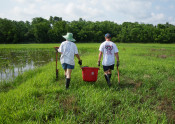 Five Star and Urban Waters Restoration Grant Program - National Fish and Wildlife Foundation The Five Star and Urban Waters Restoration Grant Program, administered by the National Fish and Wildlife Foundation (NFWF), develops community stewardship of natural resources by preserving ecologic services and enhancing wildlife habitat. Five Star Grant projects often concern water quality issues in target watersheds, stormwater runoff, and degraded shorelines in coastal, riparian, and wetland habitats. Five Star grants range from $20,000 to $50,000, and average $25,000 per project. Projects can occur on public land (such as a park) or private land (such as... Read More →
Five Star and Urban Waters Restoration Grant Program - National Fish and Wildlife Foundation The Five Star and Urban Waters Restoration Grant Program, administered by the National Fish and Wildlife Foundation (NFWF), develops community stewardship of natural resources by preserving ecologic services and enhancing wildlife habitat. Five Star Grant projects often concern water quality issues in target watersheds, stormwater runoff, and degraded shorelines in coastal, riparian, and wetland habitats. Five Star grants range from $20,000 to $50,000, and average $25,000 per project. Projects can occur on public land (such as a park) or private land (such as... Read More →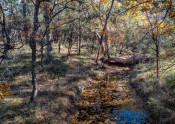 Forest Legacy Program (FLP) - Texas A&M Forest Service (TFS) About the Forest Legacy Program The Forest Legacy Program (FLP), administered by the Texas A&M Forest Service, the State of Texas, and USDA Forest Service, is a voluntary program which purchases conservation easements on forestland voluntarily offered for purchase by private landowners. Protecting priority forests from conversion to non-forested land use is the program’s goal. Forested wetland conservation is an aspect of this program. Eligible land must be in the Forest Legacy target area. Landowners must have clear title, be willing to permanently... Read More →
Forest Legacy Program (FLP) - Texas A&M Forest Service (TFS) About the Forest Legacy Program The Forest Legacy Program (FLP), administered by the Texas A&M Forest Service, the State of Texas, and USDA Forest Service, is a voluntary program which purchases conservation easements on forestland voluntarily offered for purchase by private landowners. Protecting priority forests from conversion to non-forested land use is the program’s goal. Forested wetland conservation is an aspect of this program. Eligible land must be in the Forest Legacy target area. Landowners must have clear title, be willing to permanently... Read More →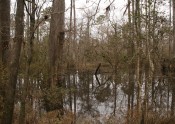 Forest Stewardship Program (FSP) - Texas A&M Forest Service (TFS) About the Forest Stewardship Program The Forest Stewardship Program, administered by Texas A&M Forest Service and their partner, USDA Forest Service, provides technical assistance to landowners who wish to sustainably manage their forested property. There is no cost to the landowner for assistance or forest plan preparation. More than 8,000 FSP plans have been created since FSP began in 1991, enrolling more than 1.4 million acres of Texas forests. Foresters help landowners tailor a management plan to their goals and unique forestland. This... Read More →
Forest Stewardship Program (FSP) - Texas A&M Forest Service (TFS) About the Forest Stewardship Program The Forest Stewardship Program, administered by Texas A&M Forest Service and their partner, USDA Forest Service, provides technical assistance to landowners who wish to sustainably manage their forested property. There is no cost to the landowner for assistance or forest plan preparation. More than 8,000 FSP plans have been created since FSP began in 1991, enrolling more than 1.4 million acres of Texas forests. Foresters help landowners tailor a management plan to their goals and unique forestland. This... Read More → Forest Taxation Program - Texas A&M Forest Service (TFS) Texas A&M Forest Taxation Program was developed to assist forestland owners in navigating taxes associated with operation and stewardship of a healthy forest. In silviculture, property taxes, cost-share assistance, capital gains taxes, and land and conservation easement donations are complex legal arrangements that may have taxation implementations; and timberland operation and ownership is not always well understood by tax professionals. The Forest Taxation Program website contains guides to the Timberland Property Tax in Texas, information on tax incentives associated with timberland, tax valuation... Read More →
Forest Taxation Program - Texas A&M Forest Service (TFS) Texas A&M Forest Taxation Program was developed to assist forestland owners in navigating taxes associated with operation and stewardship of a healthy forest. In silviculture, property taxes, cost-share assistance, capital gains taxes, and land and conservation easement donations are complex legal arrangements that may have taxation implementations; and timberland operation and ownership is not always well understood by tax professionals. The Forest Taxation Program website contains guides to the Timberland Property Tax in Texas, information on tax incentives associated with timberland, tax valuation... Read More →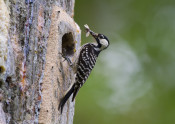 Habitat Conservation Plan (HCP) and Incidental Take Permits - US Fish and Wildlife Service (USFWS) Incidental Take Federally listed and threatened endangered species often rely on critical habitat found on private land. The population and habitat needs of one of these species may be juxtaposed with economic development and other legal activities on a landowner’s property. In these situations, “incidental take” of a protected species can occur. Incidental take without an approved permit from USFWS is subject to penalty under the Endangered Species Act. The Endangered Species Act provides a mechanism by which landowners can minimize and... Read More →
Habitat Conservation Plan (HCP) and Incidental Take Permits - US Fish and Wildlife Service (USFWS) Incidental Take Federally listed and threatened endangered species often rely on critical habitat found on private land. The population and habitat needs of one of these species may be juxtaposed with economic development and other legal activities on a landowner’s property. In these situations, “incidental take” of a protected species can occur. Incidental take without an approved permit from USFWS is subject to penalty under the Endangered Species Act. The Endangered Species Act provides a mechanism by which landowners can minimize and... Read More → Landowner Incentive Program - Texas Parks and Wildlife Department Landowner Incentive Program (LIP) The Landowner Incentive Program (LIP) is a voluntary conservation program administrated by Texas Parks and Wildlife Department and funded through the US Fish and Wildlife Service (USFWS) Partners for Fish and Wildlife Program, National Fish and Wildlife Foundation, and others. LIP provides financial assistance to landowners who wish to implement conservation practices, particularly for activities benefiting rare or at-risk species and valuable riparian areas and watersheds. LIP is a reimbursement program. Landowners will receive payment upon completion of the... Read More →
Landowner Incentive Program - Texas Parks and Wildlife Department Landowner Incentive Program (LIP) The Landowner Incentive Program (LIP) is a voluntary conservation program administrated by Texas Parks and Wildlife Department and funded through the US Fish and Wildlife Service (USFWS) Partners for Fish and Wildlife Program, National Fish and Wildlife Foundation, and others. LIP provides financial assistance to landowners who wish to implement conservation practices, particularly for activities benefiting rare or at-risk species and valuable riparian areas and watersheds. LIP is a reimbursement program. Landowners will receive payment upon completion of the... Read More →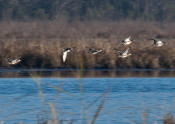 Mitigation Bank Credit: Landowners/Developers and Aggregators - Various Private and Nonprofit Entities Creating a Mitigation Bank Basic process for developing your own mitigation bank: Planning Pre-prospectus meeting with the US Army Corps of Engineers (USACE) Submission of draft prospectus for review by USACE. If USACE finds the prospectus feasible, it will be sent out on public notice for comment. Review by federal, state, and local agencies and general public Mitigation Bank Review Team assessment Mitigation bank instrument development – legal document for the bank Mitigation bank instrument is sent out for public notice Bank approval... Read More →
Mitigation Bank Credit: Landowners/Developers and Aggregators - Various Private and Nonprofit Entities Creating a Mitigation Bank Basic process for developing your own mitigation bank: Planning Pre-prospectus meeting with the US Army Corps of Engineers (USACE) Submission of draft prospectus for review by USACE. If USACE finds the prospectus feasible, it will be sent out on public notice for comment. Review by federal, state, and local agencies and general public Mitigation Bank Review Team assessment Mitigation bank instrument development – legal document for the bank Mitigation bank instrument is sent out for public notice Bank approval... Read More →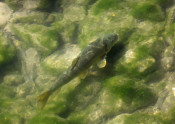 National Fish Passage Program - US Fish and Wildlife Service (USFWS) Dams in Texas According to the US Army Corps of Engineer’s National Inventory of Dams, Texas has over 7,000 dams, more than any other state. Most dams in Texas are privately owned, low-hazard earthen dams built between 1950 and 1989. The amount of damming along Texas waterways has led to freshwater stream habitat fragmentation. Aquatic species which migrate along the streams for spawning and other life cycle events are impeded by the obstructions. Today, many of the dams are obsolete and only... Read More →
National Fish Passage Program - US Fish and Wildlife Service (USFWS) Dams in Texas According to the US Army Corps of Engineer’s National Inventory of Dams, Texas has over 7,000 dams, more than any other state. Most dams in Texas are privately owned, low-hazard earthen dams built between 1950 and 1989. The amount of damming along Texas waterways has led to freshwater stream habitat fragmentation. Aquatic species which migrate along the streams for spawning and other life cycle events are impeded by the obstructions. Today, many of the dams are obsolete and only... Read More →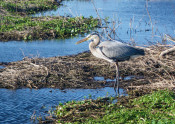 Neotropical Migratory Bird Conservation Act (NMBCA) Grants - US Fish and Wildlife Service (USFWS) About the Neotropical Migratory Bird Conservation Act Grants The Neotropical Migratory Bird Conservation Act’s (NMBCA) mission is to foster long-term conservation of neotropical migratory birds and their habitat in North America and the Caribbean. The upper Texas coast is a critical stopover point for migratory birds traveling along the Central and Mississippi Flyways, and is even used by birds traveling the Pacific and Atlantic Flyways. NMBCA, administered by the US Fish and Wildlife Service (USFWS) Division of Bird Habitat Conservation, provides cost-share... Read More →
Neotropical Migratory Bird Conservation Act (NMBCA) Grants - US Fish and Wildlife Service (USFWS) About the Neotropical Migratory Bird Conservation Act Grants The Neotropical Migratory Bird Conservation Act’s (NMBCA) mission is to foster long-term conservation of neotropical migratory birds and their habitat in North America and the Caribbean. The upper Texas coast is a critical stopover point for migratory birds traveling along the Central and Mississippi Flyways, and is even used by birds traveling the Pacific and Atlantic Flyways. NMBCA, administered by the US Fish and Wildlife Service (USFWS) Division of Bird Habitat Conservation, provides cost-share... Read More →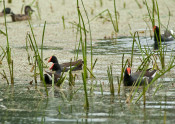 North American Wetlands Conservation Act (NAWCA) Grants - US Fish and Wildlife Service (USFWS) The North American Wetlands Conservation Act (NAWCA) mission is to preserve and enhance wetlands associated with migratory birds and other wildlife. NAWCA, administered by the US Fish and Wildlife Service (USFWS) Division of Bird Habitat Conservation, provides cost-share grants to organizations and individuals who have developed partnerships to implement wetland conservation projects in the US, Canada, and Mexico. Seventy NAWCA projects in Texas have conserved almost 190,000 acres of wildlife habitat! NAWCA grants are competitive and require at least a 1 to... Read More →
North American Wetlands Conservation Act (NAWCA) Grants - US Fish and Wildlife Service (USFWS) The North American Wetlands Conservation Act (NAWCA) mission is to preserve and enhance wetlands associated with migratory birds and other wildlife. NAWCA, administered by the US Fish and Wildlife Service (USFWS) Division of Bird Habitat Conservation, provides cost-share grants to organizations and individuals who have developed partnerships to implement wetland conservation projects in the US, Canada, and Mexico. Seventy NAWCA projects in Texas have conserved almost 190,000 acres of wildlife habitat! NAWCA grants are competitive and require at least a 1 to... Read More →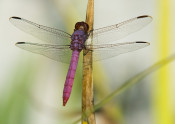 Partners for Fish and Wildlife Program - US Fish and Wildlife Service (USFWS) About the Partners Program The Partners for Fish and Wildlife Program’s (Partners Program) mission is to achieve voluntary habitat restoration on private lands for the benefit of Federal Trust Species. A Partners Program partnership is a voluntary agreement between a private landowner (any non-State or non-Federally owned land) and the US Fish and Wildlife Service (USFWS) and its partners for financial and technical assistance toward achievement of an agreed upon restoration project. A cooperative agreement with a minimum 10 year term is... Read More →
Partners for Fish and Wildlife Program - US Fish and Wildlife Service (USFWS) About the Partners Program The Partners for Fish and Wildlife Program’s (Partners Program) mission is to achieve voluntary habitat restoration on private lands for the benefit of Federal Trust Species. A Partners Program partnership is a voluntary agreement between a private landowner (any non-State or non-Federally owned land) and the US Fish and Wildlife Service (USFWS) and its partners for financial and technical assistance toward achievement of an agreed upon restoration project. A cooperative agreement with a minimum 10 year term is... Read More →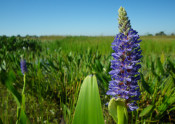 Private Lands Assistance via Texas Parks and Wildlife Department (TPWD) - Texas Parks and Wildlife Department TPWD provides technical assistance, free of charge to land managers who wish to incorporate wildlife management practices into present and future land use decisions. Upon request, a TPWD wildlife biologist will meet with the landowner to perform an ecological assessment of the property and discuss the landowner’s management goals. The wildlife biologist will: provide the landowner with tailored recommendations in the form of a written management plan and demonstrate proper record keeping for wildlife management progress detail and demonstrate wildlife population survey techniques... Read More →
Private Lands Assistance via Texas Parks and Wildlife Department (TPWD) - Texas Parks and Wildlife Department TPWD provides technical assistance, free of charge to land managers who wish to incorporate wildlife management practices into present and future land use decisions. Upon request, a TPWD wildlife biologist will meet with the landowner to perform an ecological assessment of the property and discuss the landowner’s management goals. The wildlife biologist will: provide the landowner with tailored recommendations in the form of a written management plan and demonstrate proper record keeping for wildlife management progress detail and demonstrate wildlife population survey techniques... Read More →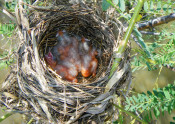 Property Tax Valuation for Wildlife Management - State of Texas and Local Central Appraisal Districts Wildlife Management Valuation of Your Property Under Texas Tax Code 1-d-1 (Sec. 23.51), property can continued to be appraised as open space land for tax purposes while being maintained for wildlife management use. Wildlife Management Valuation of a property allows a landowner to maintain and care for the land and wildlife with an ag-type exemption, without all the requirements of an agricultural tax exemption. This 1-d-1 open space exemption can be maintained without the livestock fencing, vetting, and reporting... Read More →
Property Tax Valuation for Wildlife Management - State of Texas and Local Central Appraisal Districts Wildlife Management Valuation of Your Property Under Texas Tax Code 1-d-1 (Sec. 23.51), property can continued to be appraised as open space land for tax purposes while being maintained for wildlife management use. Wildlife Management Valuation of a property allows a landowner to maintain and care for the land and wildlife with an ag-type exemption, without all the requirements of an agricultural tax exemption. This 1-d-1 open space exemption can be maintained without the livestock fencing, vetting, and reporting... Read More →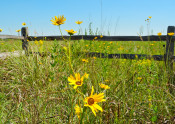 Purchase of Conservation Easements - Various Land Trust and Government Agencies Conservation easements often involve the donation of development rights of land. This donation is often used to obtain a tax deduction. However, in some cases, the development rights of land can be purchased by a willing land trust or government program for a one-time cash payment. Purchased conservation easements are also known as the purchase of development rights (PDRs). If there is funding available for the PDRs, the purchase price is often less than the value of the full value of the... Read More →
Purchase of Conservation Easements - Various Land Trust and Government Agencies Conservation easements often involve the donation of development rights of land. This donation is often used to obtain a tax deduction. However, in some cases, the development rights of land can be purchased by a willing land trust or government program for a one-time cash payment. Purchased conservation easements are also known as the purchase of development rights (PDRs). If there is funding available for the PDRs, the purchase price is often less than the value of the full value of the... Read More →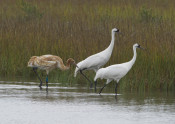 Safe Harbor Agreements (SHA) - US Fish and Wildlife Service (USFWS) Texas is home to many endangered federally listed species which are legally protected by the Endangered Species Act (ESA). Over one-third of the 564 plant and animal species listed as threatened or endangered in the United States use wetland habitats, according to the Texas General Land Office. Many of these species rely on habitat found on privately owned land. A Safe Harbor Agreement (SHA) are a tool for private landowner whom would like to aid in the recovery of a listed or... Read More →
Safe Harbor Agreements (SHA) - US Fish and Wildlife Service (USFWS) Texas is home to many endangered federally listed species which are legally protected by the Endangered Species Act (ESA). Over one-third of the 564 plant and animal species listed as threatened or endangered in the United States use wetland habitats, according to the Texas General Land Office. Many of these species rely on habitat found on privately owned land. A Safe Harbor Agreement (SHA) are a tool for private landowner whom would like to aid in the recovery of a listed or... Read More →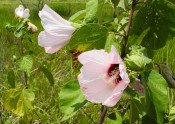 Tax Deduction via Bargain Sale - IRS A bargain sale is the sale of land or other assets to a charity, land trust, or other non-profit for less than fair market value. In general, the fair market value, less the sale price, can be deducted from your taxes as a charitable donation as long as the property has been held for at least one year by the landowner. In a single year, this deduction is limited to 30% of the donor’s adjusted gross income, but can be carried forward over five years. This can... Read More →
Tax Deduction via Bargain Sale - IRS A bargain sale is the sale of land or other assets to a charity, land trust, or other non-profit for less than fair market value. In general, the fair market value, less the sale price, can be deducted from your taxes as a charitable donation as long as the property has been held for at least one year by the landowner. In a single year, this deduction is limited to 30% of the donor’s adjusted gross income, but can be carried forward over five years. This can... Read More →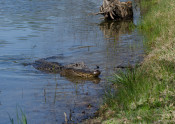 Tax Deduction via Donation of Conservation Easement - IRS What is a Conservation Easement? A conservation easement is a voluntary legal agreement between a property owner and a qualified entity (public agency or private conservation organization/non-profit), which will restrict the future land uses of a property to protect its natural and ecological qualities. Conservation easements can permanently protect land from development while the landowner continues to own the land. Conservation easements are designed with the unique characteristics of the land and land use goals of the landowner in mind. Conservation easements can protect land while still... Read More →
Tax Deduction via Donation of Conservation Easement - IRS What is a Conservation Easement? A conservation easement is a voluntary legal agreement between a property owner and a qualified entity (public agency or private conservation organization/non-profit), which will restrict the future land uses of a property to protect its natural and ecological qualities. Conservation easements can permanently protect land from development while the landowner continues to own the land. Conservation easements are designed with the unique characteristics of the land and land use goals of the landowner in mind. Conservation easements can protect land while still... Read More →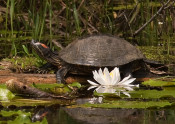 Tax Deduction via Donation of Land - IRS Real Estate Donation A landowner may be interested in gifting a property to a charity or land trust. When a charity or land trusts accepts a real estate donation, the landowner can deduct the fair market value of the land from his or her federal taxes. Depending on how long the landowner has held the property, deduction is capped at 30% (held for a year or more) or 50% (held for less than a year) of the adjusted gross income. Excess contributions can be carried forward for... Read More →
Tax Deduction via Donation of Land - IRS Real Estate Donation A landowner may be interested in gifting a property to a charity or land trust. When a charity or land trusts accepts a real estate donation, the landowner can deduct the fair market value of the land from his or her federal taxes. Depending on how long the landowner has held the property, deduction is capped at 30% (held for a year or more) or 50% (held for less than a year) of the adjusted gross income. Excess contributions can be carried forward for... Read More →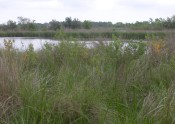 Texas Coastal Program - US Fish and Wildlife Service (USFWS) The Coastal Program assists with funding for coastal habitat projects. The Coastal Program partners with Federal programs, State agencies, Tribal and local governments, non-profit organizations, businesses, industry, land trusts, and private landowners who wish to fulfill habitat conservation goals on their land. The Coastal Program is a reimbursement program. The landowner is not reimbursed for the cost-share portion of the project cost until after the project is completed. Cooperative partnerships are emphasized by the Coastal Program. Coastal Program partners, known as cooperators,... Read More →
Texas Coastal Program - US Fish and Wildlife Service (USFWS) The Coastal Program assists with funding for coastal habitat projects. The Coastal Program partners with Federal programs, State agencies, Tribal and local governments, non-profit organizations, businesses, industry, land trusts, and private landowners who wish to fulfill habitat conservation goals on their land. The Coastal Program is a reimbursement program. The landowner is not reimbursed for the cost-share portion of the project cost until after the project is completed. Cooperative partnerships are emphasized by the Coastal Program. Coastal Program partners, known as cooperators,... Read More →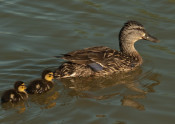 Texas Prairie Wetlands Project - Ducks Unlimited The Texas Prairie Wetlands Project (TPWP) is a partnership between Ducks Unlimited, Texas Parks and Wildlife Department, USDA Natural Resources Conservation Service, and U.S. Fish and Wildlife Service. The TPWP mission is to create overwintering habitat for waterfowl and improve health and survival rates before migration in the spring. TPWP works with private landowners in 28 counties on the Texas Gulf Coast to restore and enhance existing wetlands and to create new wetlands. TPWP provides technical assistance for surveying, engineering, and designing a wetland project and... Read More →
Texas Prairie Wetlands Project - Ducks Unlimited The Texas Prairie Wetlands Project (TPWP) is a partnership between Ducks Unlimited, Texas Parks and Wildlife Department, USDA Natural Resources Conservation Service, and U.S. Fish and Wildlife Service. The TPWP mission is to create overwintering habitat for waterfowl and improve health and survival rates before migration in the spring. TPWP works with private landowners in 28 counties on the Texas Gulf Coast to restore and enhance existing wetlands and to create new wetlands. TPWP provides technical assistance for surveying, engineering, and designing a wetland project and... Read More →
